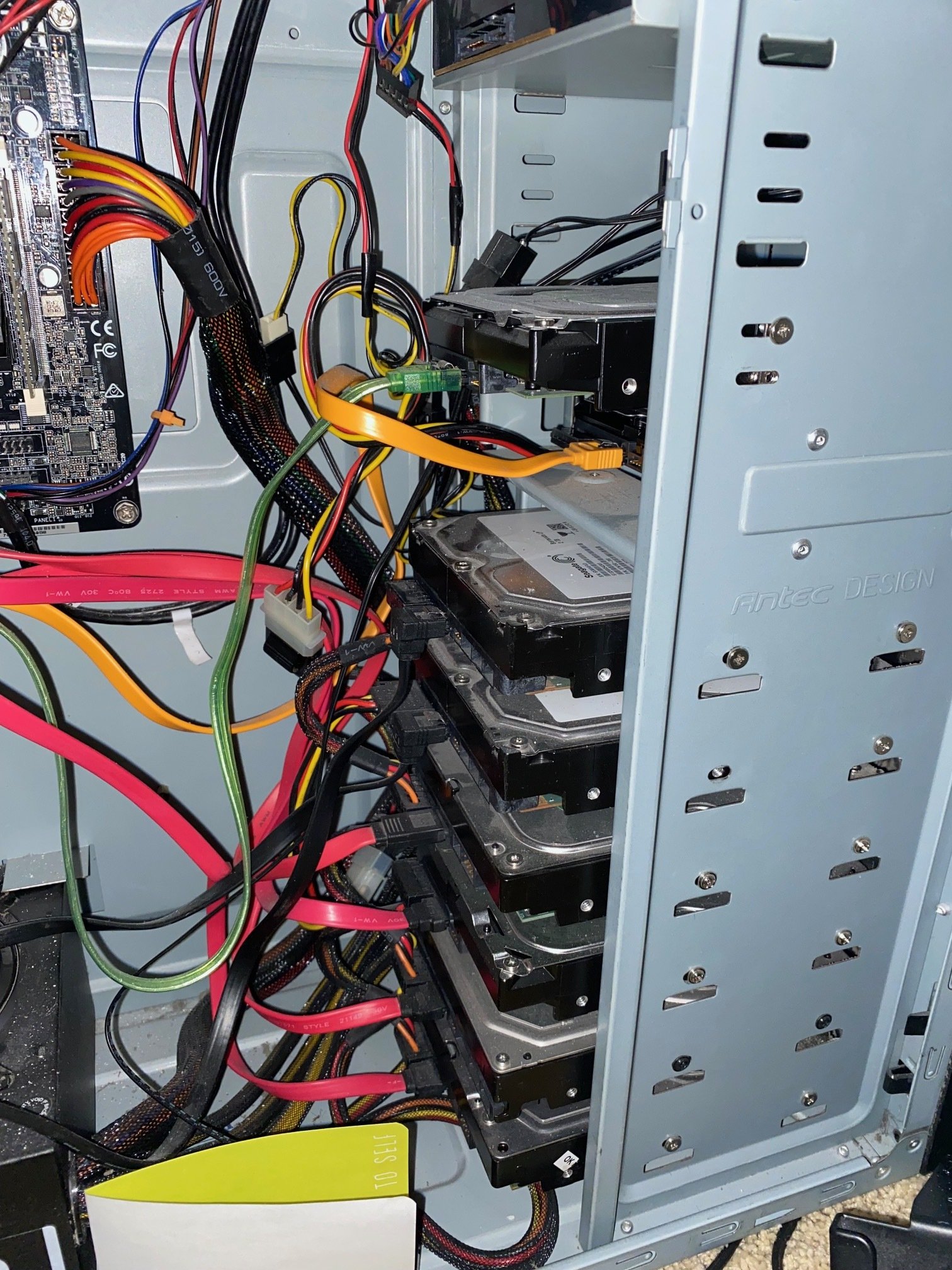this post was submitted on 05 Mar 2024
32 points (97.1% liked)
Self Hosted - Self-hosting your services.
11447 readers
2 users here now
A place to share alternatives to popular online services that can be self-hosted without giving up privacy or locking you into a service you don't control.
Rules
- No harassment
- crossposts from c/Open Source & c/docker & related may be allowed, depending on context
- Video Promoting is allowed if is within the topic.
- No spamming.
- Stay friendly.
- Follow the lemmy.ml instance rules.
- Tag your post. (Read under)
Important
Beginning of January 1st 2024 this rule WILL be enforced. Posts that are not tagged will be warned and if not fixed within 24h then removed!
- Lemmy doesn't have tags yet, so mark it with [Question], [Help], [Project], [Other], [Promoting] or other you may think is appropriate.
Cross-posting
- !everything_git@lemmy.ml is allowed!
- !docker@lemmy.ml is allowed!
- !portainer@lemmy.ml is allowed!
- !fediverse@lemmy.ml is allowed if topic has to do with selfhosting.
- !selfhosted@lemmy.ml is allowed!
If you see a rule-breaker please DM the mods!
founded 3 years ago
MODERATORS
you are viewing a single comment's thread
view the rest of the comments
view the rest of the comments

my 2 cents just in case...:
A raid6 is not a replacement for backup ;-) i use rdiff-backup which is easy to use, stores only one full backup and all increments are to the past while it is only possible to delete the oldest increments (afaik no "merging") i never needed anything else. The backup should be one off-site and another one offline to be synced once in a while manually. Make complete dumps (including triggers, etc) from databases before doing the backup ;-)
i like to have a recreateable server setup, like setting it up manually, then putting everything i did into ansilbe, try to recreate a "spare" server using ansible and the backup, test everything and you can be sure you also have "documented" your setup to a good degree.
for hardware i do not have much assumptions about performance (until it hits me), but an always-running in-house server should better safe power (i learned this the costly way). it is possible to turn cpu's off and run only on one cpu with only a reduced freq in times without performance needs, that could help a bit, at least it would feel good to do so while turning cpu's on again + set higher frequency is quick and can be easily scripted.
hard drives: make sure you buy 24/7, they are usually way more hassle-free than the consumer grades and likely "only" cost double the price. i would always place the system on SSD but always as raid1 (not raid6), while the "other" could then maybe be a magnetic one set to write-mostly.
as i do not buy "server" hardware for my home server, i always buy the components twice when i change something, so that i would have the spare parts ready at hand when i need it. running a server for 5+ years often ends up in not beeing able to buy the same again, and then you have to first search what you want, order, test, maybe send back as it might not fit... instable memory? mainboard released smoke signs? with spare parts at hand, a matter of minutes! only thing i am missing with my consumer grade home server hardware is ecc ram :-/
for cooling i like to use a 12cm fan and only power it with 5v (instead of the 12v it wants) so that it runs smoothly slow and nearly as silent as a passive only cooling, but heat does not build up in the summer. do not forget to clean the dust once in a while... i never had a 5v powered 12V-12cm fan that had any problems with the bearings and i think one of them ran for over a decade. i think the 12volt fans last longer with 5v, but no warranty from me ;-)
even with headless i like to have a quick way at hand to get to a console in case of network might not be working. i once used a serial cable and my notebook, then a small monitor/keyboard, now i use pikvm and could look to my servers physical console from my mobile phone (but would need ssl client certificate and TOTP to do so) but this involves network, i know XD
you likely want smart monitoring and once in a while run memtest.
for servers i also like to have some monitoring that could push a message to my phone somehow for some foreseeable conditions that i would like to handle manually.
debsums, logcheck logwatch and fail2ban are also worth looking at depending on what you want.
also after updating packages, have a look at lsof | egrep "DEL|deleted" to see what programs need a simple restart to really use libraries that have been updated. so reboots only for newer kernels.
ok this is more than 2 cents, maybe 5. never mind
hope these ideas help a bit
Yeah, I have an offline backup I do every year in a fireproof safe in my basement. Might open a safe deposit box at some point, but I feel reasonably safe.
Good call on power efficiency. I'll have to keep that in mind. I think I'm currently drawing around 100W which is mostly the hard drives (the CPU doesn't even need a fan). I assume that might go up a bit in a new build, but I think the benefits will be worth it.